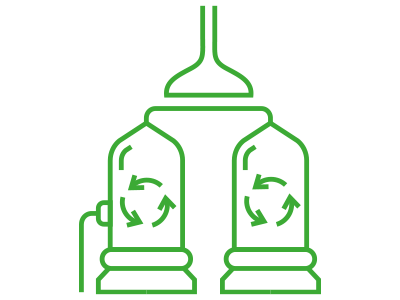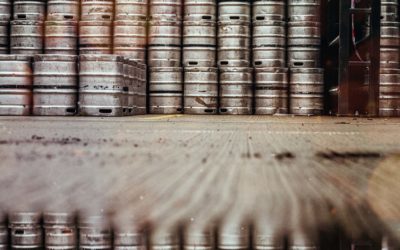Sustainability: What brewers are doing
Circularity
The concept of the circular economy – or circularity – is a model of production and consumption that involves sharing, leasing, reusing, refurbishing, recycling and upcycling existing materials and products as long as possible. For Europe’s brewers, circularity has long been part of the job. But new ideas are taking the concept further than ever – and helping curb climate change.
Why circularity?
Brewers use materials and resources to make beer, package it, and distribute it. But the brewing sector keeps looking for ways to cut down waste by reducing the amount of virgin material used and reusing materials wherever possible.
Any product stream which cannot be used in any secondary products such as label pulps or packaging may be recycled. If it is not possible to recycle them, breweries may use waste incineration (with or without heat recovery). The result of all the efforts to minimise waste has resulted in some breweries committing to zero waste to landfill.
Today, there is an even stronger awareness of the need to cut the environmental footprint. Beer consumers increasingly look for sustainability as a factor in their purchases. Fresh, local ingredients are also part of how beer is being defined by consumers.
What brewers are doing
Brewers are investing their natural creativity and drive for innovation into ideas for becoming more sustainable. Here are some ways in which they’re doing it.

Beer and bread
Beer and bread have gone together since the earliest days of brewing, with both using grains and yeast, so it should come as little surprise that some bakers are turning beer secondary materials into bread, and unsold bread (one of the most wasted food products in Europe) is being used to brew beer. For one brewer, replacing 20% of the malt with freshly baked, unsold bread, gives the beer a pleasant toasty edge. This completes the circular process as more food products are created.
Circularity in the brewery
Circularity is not just inside the brewery: some brewers use their rooftops as a garden, growing food crops that are used for both their kitchen and brewery.
Use of secondary products
Breweries are looking at how to use secondary products. For example, bacteria can use any leftover wort, the sweet liquid one has before the addition of hops and yeast, to turn captured methane into an energy source in water-treatment facilities. Others recover water from wastewater treatment to clean the tanks.
Carbon capture
- Similarly, carbon capture processes are being used in fermentation tanks: the carbon dioxide recovered is re-used for the gasification of beverages and can reduce energy consumption by 20%.
Conclusion
Innovations are emerging to reduce the environmental footprint of brewing. New ideas are leading to ingenious solutions to waste problems, helping Europe’s brewing sector become a model of circularity.
Circularity: latest initiatives
Asahi Europe and International signs the EU Code of Conduct on Responsible Food Business and Marketing Practices
By signing the EU-wide Code AEI is supporting the shift towards sustainable food systems.
How the BeerTrim stops beer taps from leaking
The BeerTrim nozzle is a simple, waste-saving device designed to improve tap performance and bar efficiency. A patented gadget that retrofits onto any beer pipe or tap, BeerTrim uses laminar flow to ensure a smooth and stable flow of beer from the tap with minimal foaming and fobbing.

Diageo-owned Guinness found inventive ways to dispose of excess beer
The key aim of this project was to process returned beer into environmentally sustainable products. We committed to taking back unsold, out-of-date kegs of beer from our customers: more than 28 million pints of beer from Ireland and around the world.

